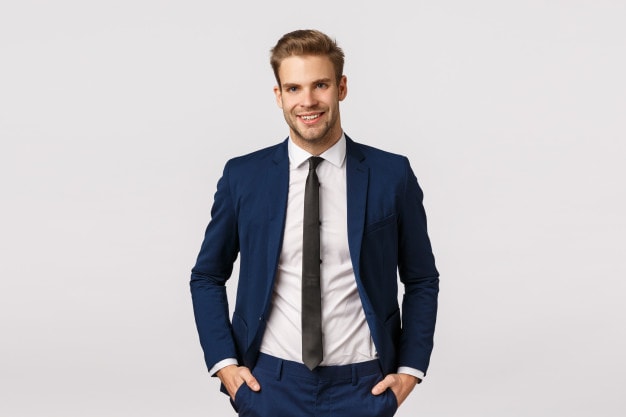Positive and effective body language is the most important yet commonly overlooked social skill that can enable you to stand out from the others and empower you to get more favorable outcomes from your interactions.
Being aware of the upsides of perusing and utilizing conscious body language is very important if you want to optimize your success ratio. In today’s time, an ever-increasing number of individuals are figuring out how to peruse and modify their body language to turn out to be progressively sound, proficient, and fruitful.
The body language that we possess plays an essential job in making the impression of our personality in the minds of others’. A decent comprehension of what messages are being conveyed by our body language help in building up a solid personality.
All in all, your body language is a type of communication that makes up a large portion of what we want to share, plus it also empowers your verbal means to be more effective, emphatic and productive, as our actions speak louder than the words.
In this post, we will cover everything associated with body language and its importance in personal as well as professional lives. We will also go through different types of positive and negative language so that you can improve your appearance effectively. So, without any further ado, let us get started-
Table of Contents
Introduction
As per an analysis, around 93% of our impression on others depends on the language that our body speaks, and only 7% of the impression depends on what you verbally state.
You must have seen some elite individuals who usually pull in others. Their body language is so powerful in creating an aura that attracts people around them. Such individuals know very well that the words that come out of the mouth aren’t as crucial as a non-verbal form of communication that our gestures and postures do.
Furthermore, many unknowingly make many conjectures about you inside an initial couple of moments of meeting. That is the reason elite class individuals fascinate others so quickly.
They realize very well that non-verbal communication and related fascination isn’t just about standing straight or making steady eye contact. It’s everything about interacting with individuals inside a couple of moments of interaction.
So, if you also want to comprise such an aura around your appearance, you should master the positive gestures and postures associated with impressive body language. By the end of this post, you will find out some of the best practices of comprising the right nonverbal abilities in your personality.
What is body language?
Body language is a significant part of non-verbal communication. It refers to the use of physical behavior, gestures, posture, and expressions to communicate. It might seem subtle but is often the most effective form of communication. It often happens subconsciously and conveys a great deal of information.
Body language is like signs. Being able to read them will help you understand the complete message one is trying to convey as well as adjust your own and send out the right messages. Body language is said to account for 60 to 65% of all conversations in our daily life.
Why is body language important?
We already know that body language forms an essential part of our daily life and is a necessary aspect of communication. But they play a much higher role in our life. Their importance goes beyond the undeniable fact that they help send strong, subtle signals. Given below are a few reasons why body language and non-verbal communication is imperative.
- Body language, on repetition, can send messages of clarity, trust and strengthens the point you are trying to make.
- If you are well aware of the signs and implications of different types of body language, you can focus on these aspects and avoid sending a contradictory message to your listeners.
- Body language can be very quickly used as a bonus to your verbal communication. It can complement your message and make a more substantial impact on your listener without too much effort on your part.
- It can even be used as a substitute for a verbal message. Body language has the power to say a lot more than words. If used rightly, it can send the perfect message for you without you having to speak any words.
- It is perhaps the most powerful tool at your disposal for making an impression. It takes less than seven seconds to make an impression. In a situation like this, you can easily win approvals by using the right body language.
The evolution of body language
Body language and non-verbal communication is perhaps the first and most primitive type of communication. Humans are the product of evolution. The ability to speak coherently and create elite languages was not discovered until much later. So body language and signs were the first and foremost means of communication.
It is still a significant form of communication between most of the animal kinExamples of positive and negative body languagegdom, especially the non-human primates. Studying apes and other such animals that are believed to be the close ancestors of humans provides us with a lot of insights on the development of body language and the need for communication.
It is implied that the need for communication resulted in the development of body language. Many similarities have been discovered between the body languages used by the animals and those used by humans. For example, a touch on the hand can be a sign to stop while pouting is considered as a sign of expressing sadness.
Different types of body language and their implications
Body language, in some ways, is complicated. There are many types of body language, and all of them can mean different things. There are also different ways to perceive it. The main components of body language are as follows:
1. Facial expressions
We can convey a lot of emotions using our faces. Some of them are subconscious, while we can control others. These emotions include happiness, sadness, surprise, disgust, confusion, contempt, excitement, fear, etc.
These are the same across all cultures and can help determine if we can trust a person as well as make them trust us.
2. Gestures
Gestures refer to the little movements and signals of our body. These include the signs we make with our hands while talking to someone animatedly. These are used mostly during arguments and while aggressively trying to make a point.
Some gestures are made consciously and can mean different things in different cultures. So it is essential to be careful with them.
3. Posture and body movement
This refers to the way people walk, stand, sit, or hold their head. The way a person carries himself or herself communicates a lot of information.
4. Eye contact
This is one of the most critical aspects of non-verbal communication. The way you look at someone or the amount of eye contact you make can communicate a lot of things about you as well as what you are trying to say.
5. Touch
Touch can communicate a lot of information. Handshakes, hugs, grips on the arm, etc. are all a part of this.
6. Space
While touch is an essential aspect of non-verbal communication, it is also essential to maintain a respectful distance and give the person the space to make them feel comfortable.
Space can be used to convey messages, but it is essential to know to maintain a space wherever necessary. Hall describes an exciting and helpful insight into this topic. He says that four levels of social distance occur in different situations. These are:
- Intimate distance: 6 to 18 inches (indicates a closer relationship and higher level of comfort between individuals)
- Personal distance: 1.5 to 4 feet (it usually occurs between family members or close friends)
- Social distance: 4 to 12 feet (this is often the case between acquaintances)
- Public distance: 12 to 25 feet (this is often used in public speaking situations)
Examples of positive and negative body language
Body language conveys a lot about what a person is thinking and feeling. Positive body language can often feel warm and welcoming and make the other person feel comfortable.
The gestures involved here make a person seem open, approachable, and interested. A negative body language, on the other hand, shows that a person is experiencing negative thoughts and emotions. The gestures involved in this case show that a person is unapproachable, hostile, or uninterested.
Positive examples:
- Palms open and facing upwards.
- Head tilted to one side.
- Stroking the chin
- Direct eye contact
- Firm handshake
- Stand straight with shoulders back.
- Leaning in
- Nodding the head
- Aligning body with the person, you are talking
- Keeping legs apart a bit instead of crossing them to show you are relaxed
- Lean a bit to show focus
- Mirror the body language of the person you are interacting
- Use hands to gesture while speaking
- Keep your arms relaxed
- Know different cultural greetings
- Use laugher to lighten the mood
- Monitor your voice
- During meetings take notes
Negative examples:
- Nail-biting
- Tapping one’s fingers
- Placing fingertips together
- Locked ankles
- Fidgeting with hand or arm accessories
- Sit on the edge of one’s seat
- Arms crossed over the chest
- Hand placed on the cheek
- Touching the nose
- Head in hands
- Pulling the ear
- Avoiding eye contact
- Overusing hands
- Poor posture
- Looking around the room
- Staring at your phone
- Not listening
- Talking too fast
- Invading personal space of others
- Lacking response
- Excessive use of the word ‘But’
- Closed off body language
- Furrowed brows
- Slumping
- A too weak or Too firm handshake
How to project positive body language
Body language is often subconscious and a projection of our thoughts. It is, however, possible to control certain aspects of our body language to make a good impression and communicate positively.
In many aspects of our life, it is essential to maintain positivity and make the listeners feel welcomed and comfortable. A showing positive body language can do this.
A significant part of projecting positive body language depends on making an excellent first impression. It is crucial to make an excellent first impression. Given below are some tips to show a positive body language:
- Adjust your attitude and use it wisely
- Make eye contact regularly
- Smile more
- Watch your posture and try to make it positive and upright
- Lean in slightly
- Shake hands and use open hand gestures
- Relax your body
Final Thoughts!
Body language forms a significant part of our daily interactions. Non-verbal communication forms an integral part of a rich and powerful social language, even more so than words.
Body language is the core of communication of every primate. Even simple actions like eye contact or the way one stands can convey a lot of information about what the person is thinking or feeling. These are detected easily in most of the situations.
But a deeper understanding of the many forms of non-verbal communication and the ability to detect them is also essential to succeed in the professional and personal spheres of life.
Do you have any instances where body language played a crucial role in getting some favorable outcomes? Feel free to share it with us in the comment section below.
Liked this post? Check out the complete series on Personal Development




Excellent writing keep it up, I believe there is much scope you can still so better.